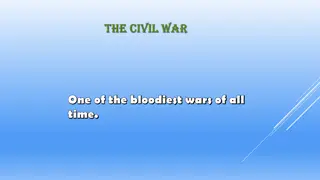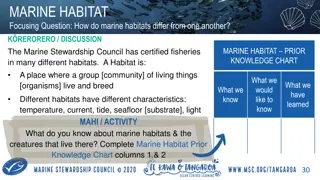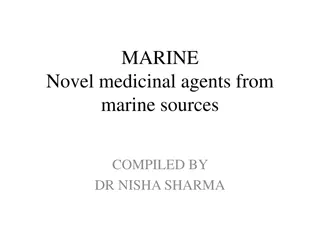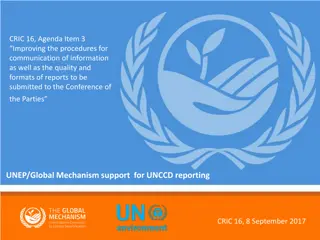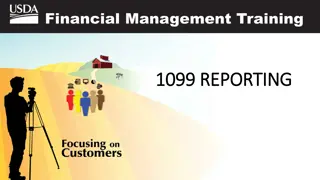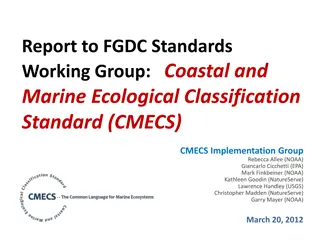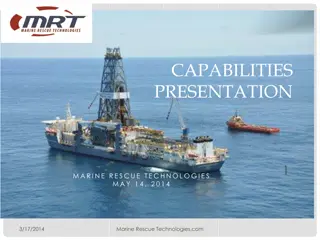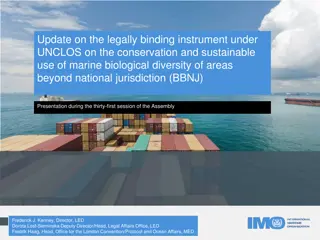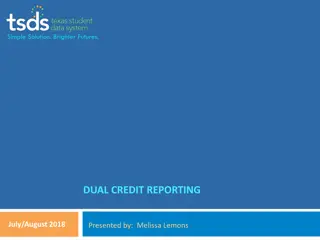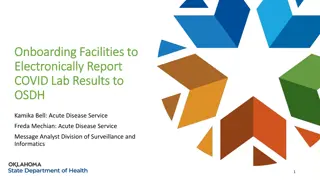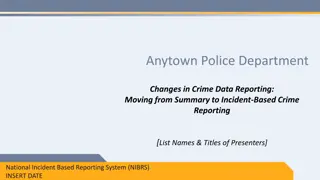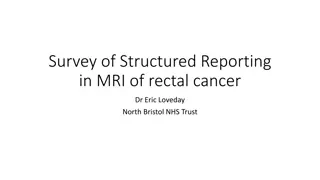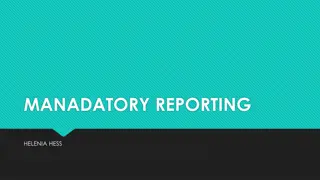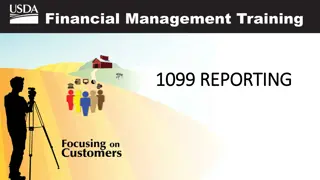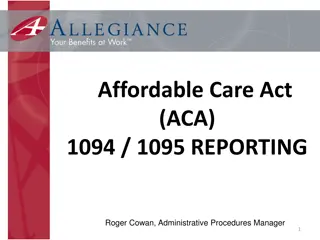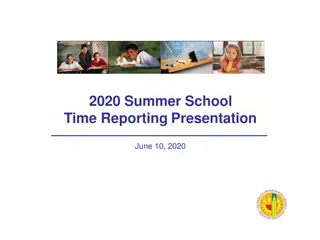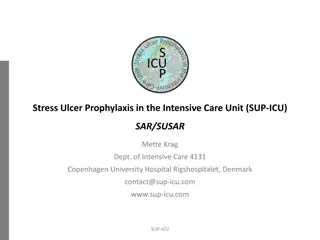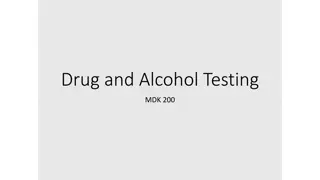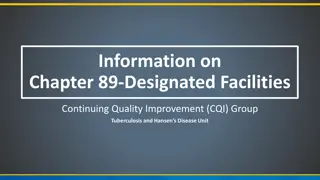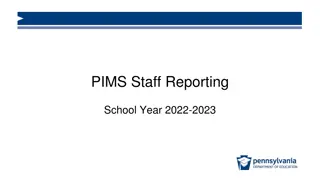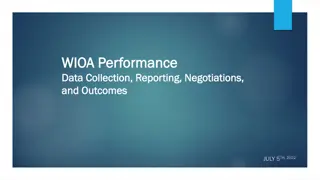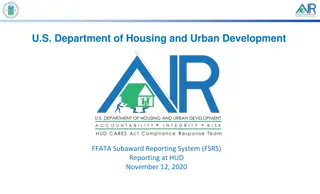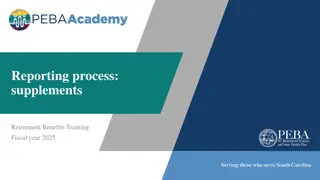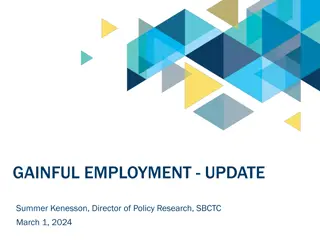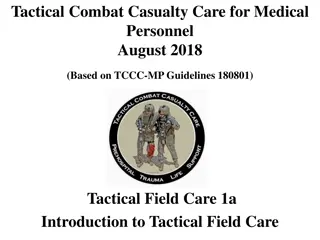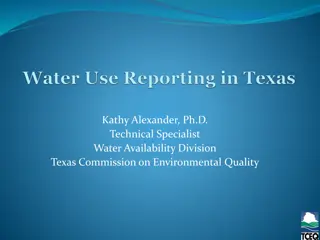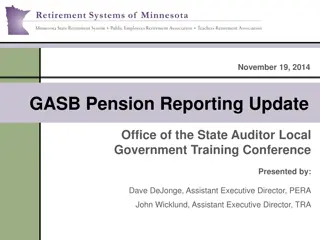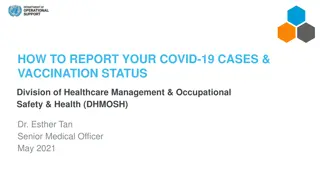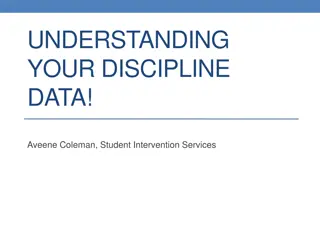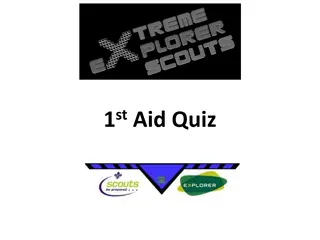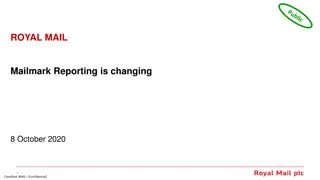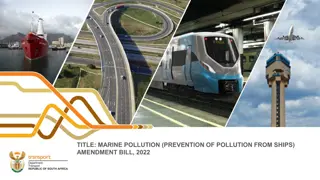Important Guidelines for Reporting Marine Casualties
Learn about the NVIC 01-15 regulations for immediate reporting of hazardous conditions and marine casualties to the Coast Guard. Understand the responsibility of notifying the Command Center in case of incidents, reporting injuries involving passengers and crew, and the criteria for serious marine incidents requiring drug and alcohol testing. Stay informed and follow the proper procedures to ensure safety and compliance in the maritime industry.
Download Presentation

Please find below an Image/Link to download the presentation.
The content on the website is provided AS IS for your information and personal use only. It may not be sold, licensed, or shared on other websites without obtaining consent from the author. Download presentation by click this link. If you encounter any issues during the download, it is possible that the publisher has removed the file from their server.
E N D
Presentation Transcript
Marine Investigations LT Peter Fransson Chief, Investigations Division Sector Northern New England
Updates Expanded Guidance for Marine Casualty Reporting (NVIC 01-15) Homeport Updates Investigations Information and Guidance Drug and Alcohol Program Information http://homeport.uscg.mil/northernnewengland
NVIC 01-15 Released on 21 July 2015 Promulgated to provide additional instruction to the Marine Industry and the Coast Guard for standardization of marine casualty reports Provide instruction for immediate reporting and advise the marine industry of obligation to report both marine casualties and hazardous conditions to the Coast Guard. Further expanded on criteria of first aid, bump and go groundings, loss of propulsion, and maneuverability (loss of steering).
Immediate Reporting of Hazardous Conditions & Marine Casualties Responsible parties involved in a marine casualty must make all efforts to notify the Coast Guard. This immediate notification allows Coast Guard to act as necessary to reduce risk on the waterway, dispatch resources, put in place vessel control measures and begin an investigation when time is a critical factor. Initial Notifications shall be made to the Command Center in the OCMI Zone with which your vessel(s) are operating. Maritime industry are encouraged not to make notifications to duty USCG inspectors or duty USCG investigators without first providing initial notification through the Command Center. Tugs hold wreckage of the DM 932 barge after ship collision. Mississippi River
Reports of Injuries (Involving Passengers & Crew) When an injury involves a passenger: All injuries of passengers that exceed first aid care shall be immediately reported to the Coast Guard and documented with a CG-2692. When an injury involves a crewmember: All injuries sustained that both 1) exceed first aid care and 2) render the crewmember unfit to perform duties shall be documented with a CG-2692. Injuries that require a CG-2692, also meet the criteria of a serious marine incident, which requires drug and alcohol testing of all personnel engaged or employed deemed directly involved in the incident.
Bump and Go Groundings (1 of 2) Grounding was only momentary (e.g., reversing engines frees the grounded vessel on the first attempt, no assist vessel is needed to free the vessel, all towing connections remain intact) and that the grounding did not result in any other marine casualty criteria (i.e. pollution, injury, etc). Initial notifications of bump and go groundings must still be made to the Coast Guard Command Center as notice of a hazardous condition per 33 CFR Part 160.216.
Bump and Go Groundings (2 of 2) A Coast Guard Investigating Officer shall review each reported bump and go grounding in order to confirm that it meets the criteria to be excluded from the grounding casualty reporting requirements under 46 CFR 4.05. The Coast Guard response to a claim of a bump and go grounding is at the discretion of the cognizant OCMI/COTP
Loss of Propulsion (Primary Propulsion and associated system components) Loss of propulsion means unexpectedly, even momentarily. Additionally, voluntary shutdown is considered a loss and must be reported. These components are the ones that the vessel routinely needs to operate. - If you need thrusters to operate in a particular vessel specific operation they would count. - Renders your vessel incapable of maintaining safe speed and steerage and /or adversely impacts vessel operations. Commuter ferry and dock allision Seastreak Wall Street New York Harbor, January 2013
Loss of Steering (Steering Gear and associated components) Handled on a case by case basis, for instance (if while underway): - If you lose function of one steering pump on a two pump system, it would be considered an inspections issue. - If you lost function of both steering pumps, it s considered a casualty. - If you had need to operate the steering by secondary or emergency means (i.e., loss of bridge remote control), it s considered a casualty. Dual Ram Steering Gear System 11
Loss of Maneuverability (Reduction in Propulsion/Steering) Reduces the maneuverability of the vessel Interpreted as an occurrence that renders - a vessel incapable of maintaining safe speed and steerage for the prevailing or anticipated conditions (e.g., weather, other vessel traffic, tidal influences) and/or adversely impacts specific vessel operations (e.g., mooring, towing, anchoring, and dynamic positioning). Tug pushing a pressure barge on one of America s waterways.
Materially and Adversely affect the vessels fitness for service or route. U.S. Vessels (1 of 2) Materially or Adversely = A physical condition that requires a work around . Seaworthy is properly equipped and constructed for the conditions reasonably expected to be encountered. All based on the Route Permitted and Conditions of Operation in the COI.
Materially and Adversely affect the vessels fitness for service or route. U.S. Vessels (2 of 2) Should an occurrence result in the material condition on the vessel becoming such that it requires the temporary or permanent reduction or restriction in the vessel s operating parameters or route as compared to what is permitted in its COI, then the occurrence is considered to have met this criterion. 14
Casualty Reporting & Evaluation When the Coast Guard receives report of a potential marine casualty, accident, and hazardous condition: A qualified Coast Guard Investigating Officer (IO) will evaluate reports of hazardous conditions and marine casualties. At no time shall a written CG-2692 be requested unless the reported occurrence is determined by a qualified IO to be a reportable marine casualty. IO will evaluate the facts and determine whether further Coast Guard action is necessary. If so an investigation is started. Coast Guard Marine Casualty Investigator at work
Definition of Hazardous Condition any condition that may adversely affect the safety of any vessel, bridge, structure, or shore area or the environmental quality of any port, or navigable waterway of the United States. It may, but need not, involve collision, allision, fire, explosion, grounding, leaking, damage, injury or illness of a person aboard, or manning-shortage. 33 CFR 160.212
Additional Reporting Obligations In addition to providing notice of marine casualty, regulations require reporting hazardous conditions and inspections related issues. Reports of Hazardous conditions are to be reported to Sector Northern New England s Command Center. Sector NNE Command Center: (207) 767-0302 Typical USCG Sector Command Center
Reporting Inspections related issues Inspection related problems shall be reported to Sector Northern New England OCMI. The owner, managing operator, or master shall report damage to a boiler, unfired pressure vessel, or machinery that renders further use of the item unsafe until repairs are made, to the OCMI at the port in which the casualty occurred or nearest the port or first arrival, as soon as practicable after the damage occurs. - 46 CFR 185.208 18
***WRAP-UP*** FINAL POINTS REGARDING USCG NOTIFICATIONS 1) 46 CFR 4-05.1 and expanded guidance from NVIC 01-15? If Yes, notify Command Center immediately as required. If No, validate whether it s a hazardous condition. Is it a reportable casualty based upon criteria listed in 2) Does it meet the criteria of hazardous condition? If Yes, notify Command Center immediately as required. If No, is it an inspections issue? 3) Is it an inspections issue? If Yes, notify Sector Northern New England OCMI.
Contact Info Desk: (207) 347-5005 Fax: (207) 780-3222 E-mail: secnneinvest@uscg.mil



